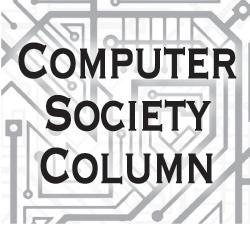
Etiquette is usually defined as ‘the conduct or procedure required by good breeding or prescribed by authority to be observed in social or official life’. Communication is a vital part of leadership. Showing strong leadership skills stems from strong communications skills. In today’s world, emails represent a significant part of communications, therefore being good at it is important from a leadership perspective as well.
‘Leadership and communication are inseparable. You can’t have one without the other.’ - Claude I. Taylor
General rules
Emails or parts of emails written with capital letters look rude. All caps is considered shouting.
Over punctuating also makes it difficult to read. Some level of punctuation is important but too much of it is not that good. Also not using proper capitalization or punctuation at all makes it hard to read the e-mail as well.
Lately we have been seeing text messaging abbreviations (such as ur instead of your, 4 instead of for, u instead of you) being used in emails. This is mainly due to the fact that the new generation has come through using mobile phones from very young ages. This has to be avoided at all times in professional emails. So are emoticons. Of course in text messages and chatting they may be used, but in professional emails they are not recommended. Like in any formal document, if a certain acronym is used, it has to be first introduced in its detailed form and then only the acronym should be used thereafter.
Although pretty basic, it’s not that uncommon to see emails with spelling and grammar mistakes. They create a bad impression about the sender in the readers’ mind. Especially spelling mistakes are fairly intolerable in today’s context as spell checkers are widely available, and in most applications they are automatic. In certain working environments, slang words may be used in emails as well, however as these written records can be forwarded/sent anywhere, usually it’s better to keep the use of slang to a minimum. In today’s working environment e-mails are widely used. Some job roles require people to deal with about hundred emails a day at their work. Therefore, before you send an email, think whether the recipient actually needs this to do their job. Otherwise, you could be wasting the other person’s time. On the other hand, like with any other form of communication this mode of communication also has to be timely, relevant, complete and appropriate.
Professional
Some of the tips we are discussing here can be used in both personal and professional contexts. However, in working environments, emails have to be very professional. Usual working ethics have to be adhered to at all times. They should be inoffensive. There are instances where people need to send emails to multiple recipients.
Then you the recipient, may have to reply to that email. Before hitting that ‘send’ button give some consideration to the questions whether you should send it to the original sender only, a few selected people or to all the people involved in the original email. The latter is when we use ‘Reply to all’.
It is advisable to limit the use of ‘Reply to all’ as it may only be wasting the time of people unnecessarily. It should also be kept in mind that if you are addressing the email to specifically a single person, but copying it to a few others as they need to be in on the conversation; be polite! Do not condemn or point out any adverse matters directly related to one of the people in the list. This will be equivalent to humiliating a person in front of an audience.
Most email applications have BCC – Blind Carbon Copy function. That’s where you can have someone’s email address in the BCC list, but others in the email wouldn’t know that that person is reading the email. In a professional context, BCC is considered very unprofessional. It can be considered a cowardly act. Sometimes there are Distribution Lists created with multiple email addresses. This makes it easy to send emails to groups of people. For example, there can be an email group for all managers of an organisation. While it is efficient, use them carefully. Sometimes, unnecessary or confidential information is provided to too many people. Remember the information has to be relevant to the recipient.
Format
Rather than writing long one-paragraph emails, it’s better to use multiple paragraphs in the body. Also by using bullets and numbers, the structure can be cleared. There should be a brief introduction of what the email is about at the beginning, then the body with paragraphs and bullets/numbers. And finally it can be ended up with the expected actions from the recipient/s.
This part has to be very clear and action items for each person should be clearly explained succinctly. At the end of the day, especially working emails are sent to achieve certain objectives, and those objectives have to be met. Therefore, it’s important to make sure action items are clearly stated. The subject line of emails has to be clearly stated as well. Especially in busy times, it could be the subject that gets the attention of the recipient and makes it meaningful. This also helps in finding old emails efficiently. Not having a subject line is very improper as well. Using keywords such as ‘Action’, ‘Info’ or ‘Urgent’ in subject line can strengthen it. In professional emails, subject lines such as ‘Hi’ or ‘Hello’ are inappropriate.
If you include attachments give brief explanations of what they are.
Just in passing, it is acceptable to write a heated e-mail, but wait 24 hours before you send it!
Yasas Vishuddhi Abeywickrama
President, Computer Society of Sri Lanka
